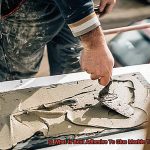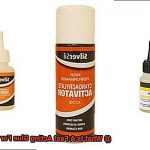Ever been in awe of super glue’s mystical powers? You know, that enchanting adhesive that binds anything to anything with an unbreakable grip? It’s like having a tube of pure sorcery. Whether you’re rescuing a shattered sculpture or fixing a broken coffee mug, super glue is always there to save the day.
But have you ever wondered what makes this glue so extraordinary? What are the secret ingredients that give it its legendary stickiness? Come on an enthralling journey with me as we uncover the truth behind this iconic invention.
Imagine a tiny bottle bursting with immense power. The captivating science of super glue lies within a handful of key ingredients, working together in perfect harmony. One of these magical components is cyanoacrylate, a fast-acting chemical compound that gives super glue its unbeatable strength.
But wait, there’s more to this story. To truly appreciate the marvels of this adhesive, we must understand the seemingly ordinary but essential elements that form its backbone. Enter stabilizers, plasticizers, and thickening agents – each playing a vital role in perfecting the glue’s formula.
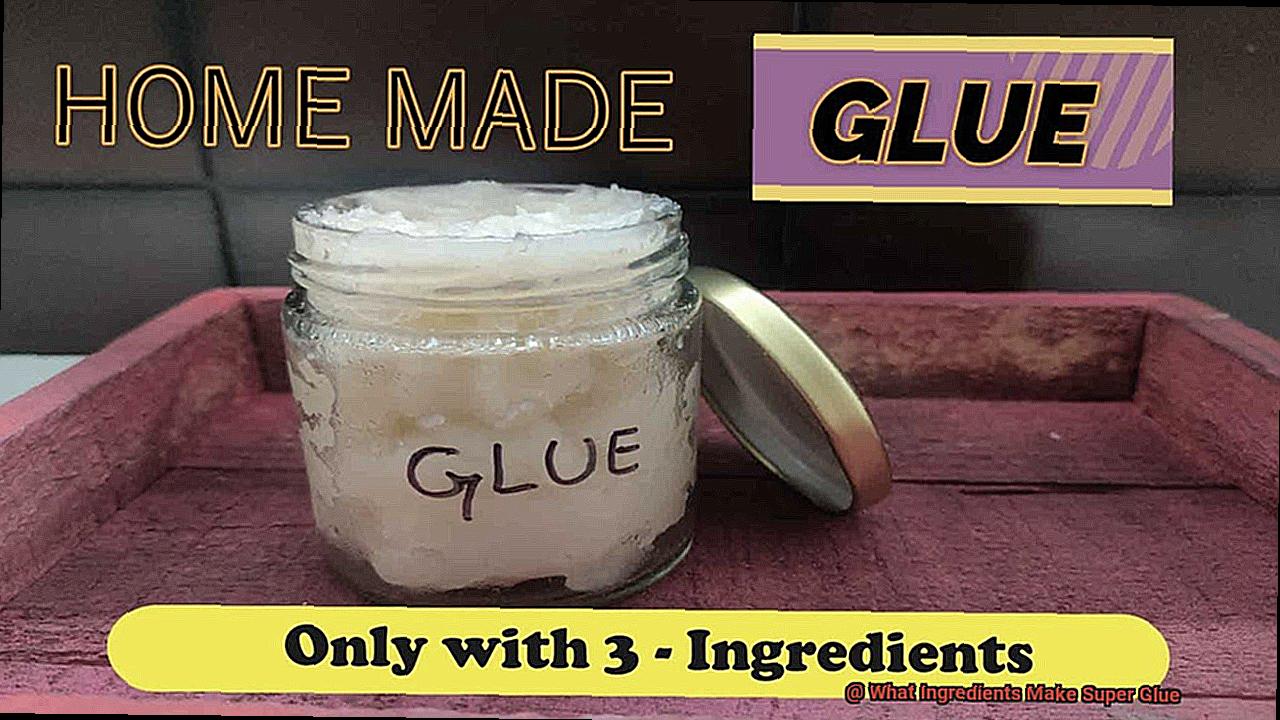
Stabilizers ensure our adhesive doesn’t prematurely cure inside its container, granting it a longer shelf life. Plasticizers bring flexibility and durability to super glue, allowing it to withstand all sorts of stresses and strains. Meanwhile, thickening agents provide just the right consistency for our wonder product to stay put while performing its magic.
This carefully crafted combination of ingredients has revolutionized repairs, artistry, and innovation across the globe. Understanding the science behind super glue not only satisfies our curiosity but also showcases humanity’s remarkable inventiveness.
So, are you ready to plunge into the mesmerizing world of super glue? Join me as we unravel the secrets behind this incredible adhesive and discover how its powerful ingredients play an extraordinary role. Brace yourself for a mind-blowing adventure that will leave you in awe.
The Main Ingredient in Super Glue: Cyanoacrylate
Contents
- 1 The Main Ingredient in Super Glue: Cyanoacrylate
- 2 How Does Cyanoacrylate Form a Bond?
- 3 Additional Ingredients Used to Enhance Performance
- 4 Stabilizers and Thickeners
- 5 Accelerators for Faster Curing
- 6 Fillers and Modifiers for Special Applications
- 7 Different Types of Super Glue and Their Formulations
- 8 Choosing the Right Super Glue for Your Needs
- 9 Conclusion
Prepare to embark on a journey into the captivating world of super glue, where the main ingredient, cyanoacrylate, holds the key to incredible bonding capabilities. This adhesive marvel has revolutionized industries and everyday repairs alike, boasting unparalleled strength and lightning-fast adhesion. In this article, we delve into the fascinating science behind cyanoacrylate and unravel why it reigns supreme as the main ingredient in super glue.
Discovering Cyanoacrylate: A Serendipitous Encounter
In an era overshadowed by World War II, Dr. Harry Coover stumbled upon a serendipitous discovery in his quest to create a transparent plastic for gunsights. Little did he know that his invention, known as cyanoacrylate, would spark a revolution in the world of adhesives. Recognizing its extraordinary adhesive properties, Dr. Coover swiftly patented cyanoacrylate in 1951, paving the way for its widespread adoption.
Polymerization: The Mighty Force Binding Surfaces
At the heart of cyanoacrylate’s bonding prowess lies polymerization—a remarkable process where the molecules of cyanoacrylic acid intricately intertwine to form long chains. This chemical metamorphosis results in an adhesive of unmatched strength and durability. The magic happens when cyanoacrylic acid encounters even a hint of moisture—be it atmospheric moisture or water vapor on the surface being bonded—triggering rapid polymerization.
Versatile Bonding Abilities: A Match Made in Adhesive Heaven
The secret to cyanoacrylate’s adaptability lies within its molecular structure. Its polar regions enable seamless interaction with polar surfaces such as metals or glass, while its nonpolar regions effortlessly bond with nonpolar surfaces like plastics or rubber. This incredible versatility makes cyanoacrylate the go-to adhesive for a vast array of materials and applications.
Rapid and Pressure-Free Bonding: A Time-Saving Marvel
Unlike its adhesive counterparts, cyanoacrylate spares us the chore of applying external heat or pressure to achieve a bond. The presence of moisture alone is enough to initiate the rapid polymerization process, culminating in an almost instantaneous hold between surfaces. This remarkable feature renders cyanoacrylate an indispensable tool for quick repairs and time-sensitive projects.
How Does Cyanoacrylate Form a Bond?
Brace yourself for a fascinating exploration of this extraordinary adhesive and its revolutionary impact on industries and everyday repairs.
Let’s start with the basics. Cyanoacrylate, the main ingredient in super glue, forms a bond through a process called polymerization. But what does that really mean? When cyanoacrylate comes into contact with moisture, like the water vapor in the air or on the surfaces being bonded, a rapid chemical reaction takes place. This reaction leads to the linking of cyanoacrylate molecules, creating long chains and ultimately resulting in a powerful and durable adhesive bond.
But how does this polymerization process unfold? It all begins with an anionic catalyst, such as hydroxide ions found in water or on the surfaces being bonded. These catalysts neutralize the acidic nature of cyanoacrylate, enabling it to react with moisture. Once the reaction kicks off, it progresses at lightning speed, often within seconds, producing a bond that is exceptionally strong.
During polymerization, cyanoacrylate molecules go through a sequence of chemical reactions known as free-radical polymerization. This intricate process involves the generation of a free radical that acts as a catalyst for bonding between cyanoacrylate molecules. The free radical interacts with the double bonds present in cyanoacrylate, causing them to break and create new bonds with neighboring molecules. This chain reaction continues until all available cyanoacrylate molecules have joined together, resulting in a solid and resilient bond.
One of the most remarkable characteristics of cyanoacrylate is its speed. Unlike other adhesives that require extensive drying or curing time, super glue instantly forms a bond upon contact with moisture. This rapid bonding ability makes it the perfect solution for quick fixes and repairs when time is of the essence.
However, it’s crucial to keep in mind that cyanoacrylate performs best on clean and dry surfaces. The presence of oil, grease, or moisture can hinder the polymerization process and weaken the bond. Therefore, it is essential to ensure that surfaces are meticulously cleaned and dried before applying super glue for optimal bonding.
Additional Ingredients Used to Enhance Performance
In our previous section, we delved into the fascinating world of super glue and its mesmerizing polymerization process. But did you know that this captivating adhesive has hidden ingredients that make it even more remarkable? That’s right. Super glue is not just powered by cyanoacrylate alone; it also harnesses the power of a select few additional ingredients to enhance its performance and overall effectiveness. So, let’s dive deeper into this magical realm and uncover the secrets of these special ingredients.
First on our list are the thickening agents – the unsung heroes that give super glue its remarkable viscosity. Imagine opening a tube of super glue, squeezing it onto a surface, and marveling at how it defies gravity, staying in place without dripping. Well, you can thank hydroxyethyl cellulose or polyvinyl acetate for that. These thickening agents work their magic, allowing the glue to stay put and provide a strong bond. So, next time you’re in awe of super glue’s ability to cling to vertical surfaces effortlessly, you’ll know it’s all thanks to these incredible ingredients.
Moving on, let’s uncover the role of stabilizers – the superheroes that protect super glue from deterioration. Just like a guardian ensuring peace and stability in a city, stabilizers ensure that our beloved super glue remains in top-notch condition. Ingredients like sulfur dioxide or phosphoric acid act as stabilizers, preventing premature deterioration or solidification of the glue. They also extend the product’s shelf life, ensuring it’s always ready for action when you need it most.
But wait, there’s more. We now introduce accelerators – the secret ingredients that supercharge the bonding process. Imagine having the power to create an unbreakable bond in an instant – well, accelerators make that possible. These mysterious chemicals, available in powder or liquid form, are added to the glue just before application. With accelerators on board, your super glue will work its magic even faster, saving you precious time during your crafting or repair projects.
Stabilizers and Thickeners
These unsung heroes play a vital role in making your favorite adhesive even more powerful and long-lasting. Let’s delve into their secrets and discover why they’re crucial to the world of glue.
First, let’s meet the superheroes known as stabilizers. They are the guardians of your super glue, ensuring it stays in top-notch condition. One of these heroes is hydroquinone, an inhibitor that prevents premature hardening of the glue. This means your glue stays in its liquid state until you’re ready to use it, eliminating any wasted glue or frustration.
Another incredible stabilizer is acetic acid. This compound neutralizes alkaline impurities, maintaining a slightly acidic pH. By doing so, acetic acid prevents premature curing of the glue, keeping it fresh and ready for action whenever you need it.
Now, let’s turn our attention to thickeners – the ultimate viscosity boosters. These amazing ingredients give super glue its staying power and make it easier to apply. One popular thickener is polyvinyl acetate (PVA), a water-soluble polymer that increases the glue’s viscosity, transforming it into a gel-like substance. With PVA, you can apply the glue precisely without worrying about drips or messes.

Another impressive thickener is sodium polyacrylate, a highly absorbent polymer with a remarkable ability to soak up water. When added to super glue, sodium polyacrylate thickens the adhesive and enhances its bonding capabilities. It’s like giving your super glue an extra dose of strength.
It’s worth noting that different manufacturers may use various combinations of stabilizers and thickeners in their super glue formulations. Each additive is carefully selected and balanced to ensure optimal performance, shelf life, and user-friendliness. So you can trust that the super glue you choose has been engineered with precision and expertise.
Accelerators for Faster Curing
If you’re tired of waiting around for your super glue to bond and harden, accelerators are here to save the day. These little powerhouses are like the fuel injection system for your glue, slashing curing time and getting your projects finished in record time.
So, what exactly are accelerators? They’re the secret sauce that can be added to super glue to kickstart the curing process. Their main mission is to cut down on those agonizing wait times and deliver lightning-fast results. It’s like having a turbocharged engine for your glue.
Let’s dive deeper into how accelerators work their magic. They rev up the chemical reaction between the glue and the surfaces you’re bonding, cranking up the rate of curing. It’s like giving your glue a shot of adrenaline, making it cure in a fraction of the time it would usually take. Talk about a power boost.
The most common accelerator you’ll come across is the cyanoacrylate activator. This superhero contains acidic components that jumpstart the bonding process. Think of it as the key that ignites your glue’s performance and gets it firing on all cylinders.
But wait, there’s more. Moisture, heat, and certain types of light also play a role in accelerating curing. Moisture accelerators work by reacting with the water vapor in the air or on the surfaces you’re gluing together. This reaction amps up bonding and turbocharges curing speed. It’s like adding a dose of extra oomph to your glue.
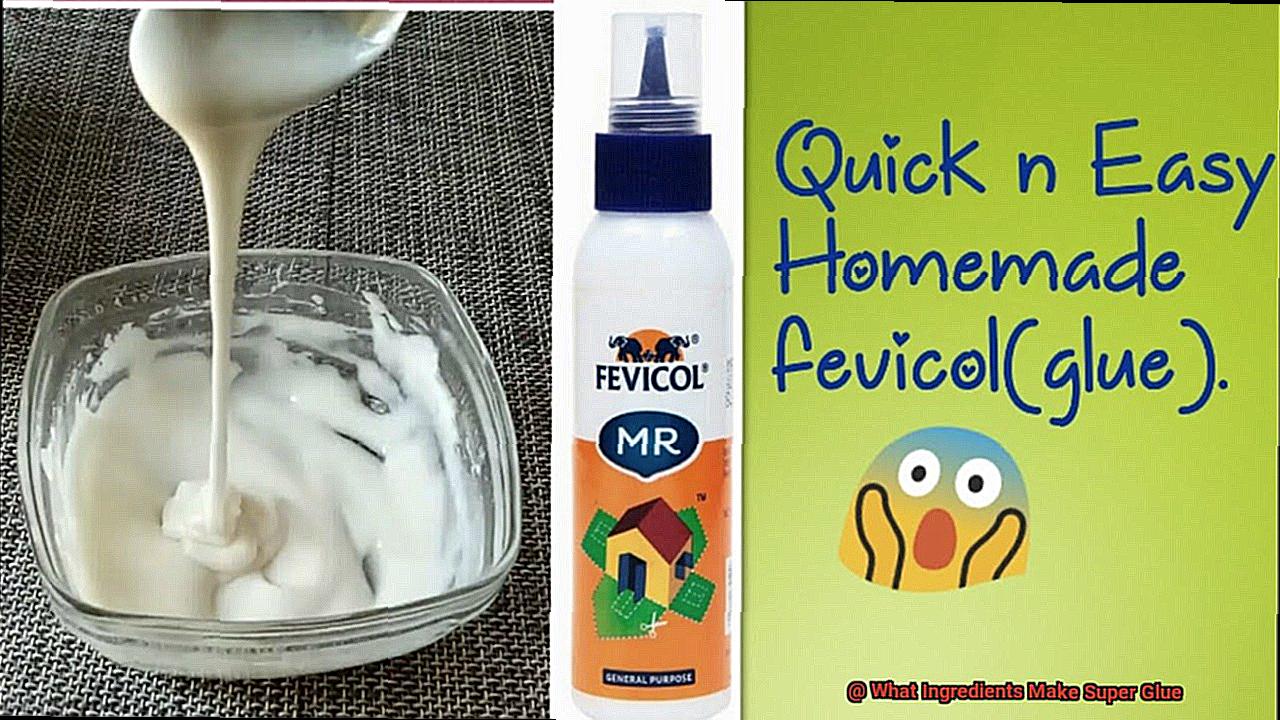
When it comes to heat accelerators, they do exactly what their name suggests – they crank up the temperature of the glue. By heating things up, they give your glue a turbocharge, making it cure faster than ever before. It’s like putting your glue on the fast track to success.
And then we have UV light accelerators, the superheroes of the industrial world. In specialized settings, powerful equipment emits ultraviolet radiation to swiftly cure large amounts of super glue. It’s like waving a magic wand and witnessing your glue transform right before your eyes.
Now, a word of caution: while accelerators are incredible at speeding up the curing process, they should be used with care. Too much accelerator can result in weaker bonds or brittle cured glue, and nobody wants that. So, follow the instructions and use accelerators in moderation for the best results.
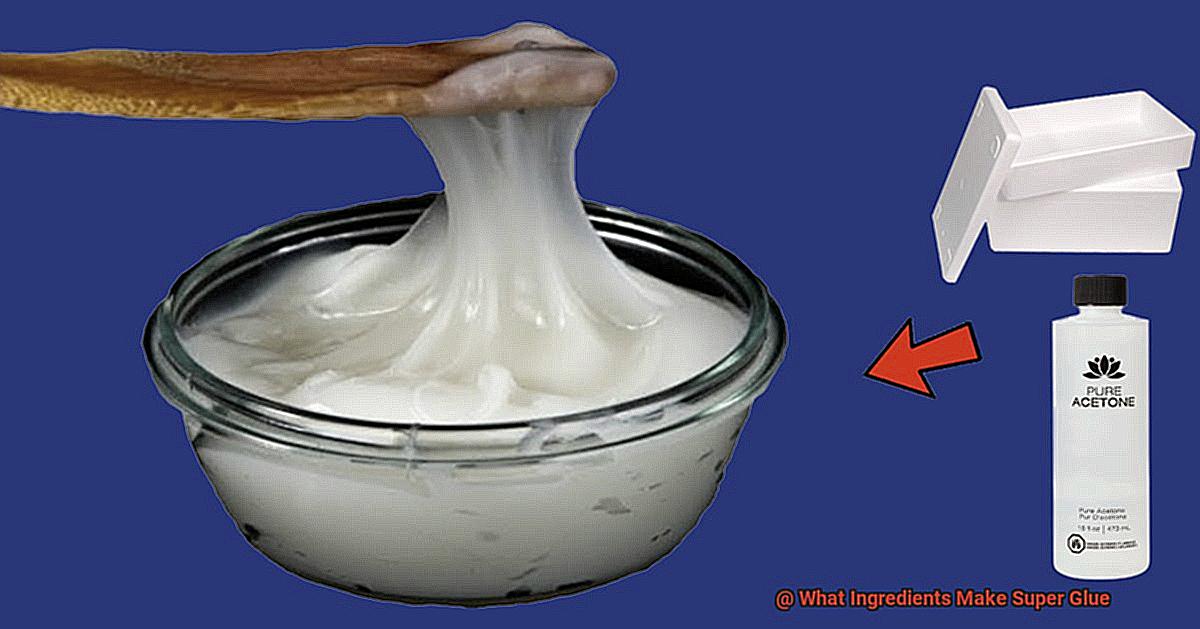
Fillers and Modifiers for Special Applications
Prepare to be captivated as we delve into the secret ingredients that elevate the performance of this powerful adhesive. Let’s embark on this thrilling journey together.
Let’s start by unraveling the mysteries of fillers. These remarkable additions enhance the adhesive’s capabilities for specific scenarios. Silica, a widely used filler, works its magic by increasing the viscosity of the glue. With precise control over the flow characteristics, manufacturers can achieve flawless application, whether it involves filling gaps or bonding porous surfaces.
But hold on tight, because there’s more to discover. Rubber fillers come to the rescue, bestowing super glue with incredible flexibility. Imagine an adhesive that can withstand impact and vibration like a true superhero. In industries where movement and stress are common, such as automotive or construction, rubber-filled super glue becomes an indispensable ally.
Now, let’s venture into the realm of modifiers. These ingenious components elevate super glue’s properties to new heights. Meet the accelerator, the Flash of the glue world. By speeding up the curing process, this modifier allows for lightning-fast bonding times. But wait, there’s a dynamic duo at play here. Activators join forces with accelerators, ensuring swift and effective bonding by prepping one surface before applying the glue.
Prepare to be mystified by thixotropic agents. These shape-shifting marvels alter the adhesive’s viscosity under different conditions. When pressure is applied during application, the glue flows effortlessly, granting you unparalleled control. Once the pressure dissipates, it transforms into a more viscous state, securing a bond that is as strong as it is enduring.
But our adventure doesn’t end here. Specialty additives await us on this magical journey. Behold the UV stabilizers, guardians against the sun’s harmful rays. With their protection, your bond remains untainted by sun-induced degradation. And when faced with scorching temperatures, fear not. Heat-resistant additives come to the rescue, ensuring your glue retains its formidable strength.
Different Types of Super Glue and Their Formulations
Prepare to be amazed as we delve into the world of super glue and unlock the secrets behind its various formulations. Super glue, also known as cyanoacrylate adhesive, is a powerful adhesive that can work wonders in fixing, bonding, and creating.
But did you know that there are different types of super glue, each with its own unique formulation?
Join us on this journey to discover the magic behind these formulations and how they can be tailored to suit your specific needs.
Cyanoacrylate Adhesive: The Unbreakable Bond
Let’s start with the superhero of super glues – cyanoacrylate adhesive. This type of super glue is formulated with special chemicals called cyanoacrylate monomers. When these monomers come into contact with moisture, they undergo a rapid polymerization process, forming an incredibly strong bond between surfaces. With its lightning-fast drying time and exceptional bonding strength, cyanoacrylate adhesive is perfect for fixing broken toys, repairing household items, or even creating intricate crafts.
Epoxy Adhesive: The Mighty Protector
Next up, we have epoxy adhesive, a true powerhouse when it comes to bonding strength. Unlike cyanoacrylate adhesive, epoxy adhesives consist of two components – a resin and a hardener – that need to be mixed together in the correct ratio. Once mixed, these components undergo a chemical reaction that results in a bond that can withstand extreme temperatures, harsh chemicals, and heavy loads. From automotive repairs to industrial applications, epoxy adhesives are the go-to choice for projects that require unbeatable strength and durability.
Specialized Formulations: Tailored for Every Material
Just like superheroes have their own unique powers, super glue also comes in specialized formulations designed to cater to specific materials or applications. Whether you’re working with plastics, metals, wood, or rubber, there’s a super glue formulation that’s perfect for your needs.
These specialized formulations often contain additional additives or modifiers that enhance adhesion to specific materials, ensuring a bond that is both strong and long-lasting.
So, whether you’re repairing a cracked plastic part or bonding wooden pieces together, choose the right formulation for optimal results.
Flexibility Matters: Bend, Don’t Break
Not all projects require a rigid and inflexible bond. That’s where flexible super glue comes into play. Some formulations have been specially engineered to retain flexibility even after drying. This type of super glue is ideal for applications where materials may undergo frequent movement or vibration. From repairing shoes and garments to fixing car interiors, flexible super glue allows for a bond that can bend without breaking, ensuring longevity and durability.
Choosing the Right Super Glue for Your Needs
Step into the captivating world of super glue, where ordinary objects are transformed into extraordinary creations with the power of a single bond. Choosing the right super glue for your needs may initially seem like traversing a treacherous path, but fear not. As an expert in this enchanting realm, I am here to guide you through the labyrinth of options and help you find the perfect adhesive potion for your project.
Let us begin our journey by delving into the mystical realm of materials. Just as wizards possess their own unique set of powers, different super glues are formulated to work their magic on specific materials. Whether you seek to unite metal, plastic, wood, or fabric, there exists a super glue that is tailor-made for the task at hand. So, consult the ancient texts and select a glue that harmonizes with your chosen material.
Strength, like a mighty warrior, is an attribute to be revered. Are you seeking a bond that can withstand the forces of nature or support heavy loads with unwavering fortitude? If so, your quest leads you to the realm of industrial-grade super glues. These powerful elixirs offer bonds of unparalleled strength, capable of defying scorching temperatures and bearing burdensome weights. However, if your endeavor is more delicate or petite in nature, fear not. A standard strength super glue shall serve you well.
In this realm of instant gratification, time is an invaluable asset. Some glues possess the power to work their magic in mere moments, while others take a bit longer to set. Consider the setting time required for your project. If swiftness is your desire, embrace a quick-drying formula that will grant you immediate results. Yet if patience is your virtue and precision your aim, select a glue that allows for a more leisurely setting process.
Viscosity, akin to the flowing robes of a sorcerer, is a trait not to be overlooked. Thin viscosity glues, with their ethereal and delicate nature, are perfect for precise applications and bonding minuscule elements together with the precision of a master craftsman. On the other hand, thick viscosity glues possess a robust and formidable strength, ideal for bridging gaps or creating bonds on larger surfaces. So, choose your viscosity wisely and let the glue flow like a river of enchantment.
8g2REE6z9V8″ >
Conclusion
In conclusion, the ingredients that make super glue are a powerful combination of chemicals.
These include cyanoacrylate, which is the main adhesive ingredient responsible for its incredible bonding strength. It also contains stabilizers to prevent premature curing and thickeners to give it a gel-like consistency.
When these ingredients come together, they create a formidable adhesive that can bond almost anything instantly.


